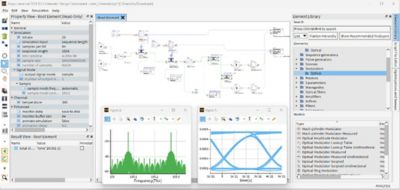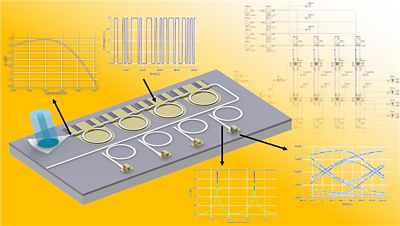Quick Specs
Ansys Lumerical INTERCONNECT works seamlessly with Ansys Lumerical CML Compiler, Ansys Multiphysics solvers, and third-party EDA and Layout tool vendors to enable fast, accurate, scalable photonic IC development.
Ansys Lumerical INTERCONNECT simulates classical and quantum photonic integrated circuits while enabling the co-design and co-simulation of photonic and electronic circuits on multiple EDA platforms.
INTERCONNECT offers a comprehensive design environment for classical and quantum photonic integrated circuits (PICs). It features the industry’s best-in-class electronic-photonic codesign and co-simulation capabilities and essential design workflows like SDL, LVS, and DRC, compatible with multiple EDA platforms. Designers can leverage Lumerical’s PDK-driven platform to efficiently create manufacturable and customizable photonic designs accounting for associated electronics, packaging, and links.

Ansys Lumerical INTERCONNECT works seamlessly with Ansys Lumerical CML Compiler, Ansys Multiphysics solvers, and third-party EDA and Layout tool vendors to enable fast, accurate, scalable photonic IC development.
JULY 2024
The Ansys Lumerical 2024 R2 brings powerful updates and features across its photonics core technologies, ecosystem, cloud and HPC, workflows, and user experience.

Improved flow between GDSFactory and Lumerical INTERCONNECT, facilitating seamless schematic-driven layout (SDL) workflows.
Ansys Lumerical INTERCONNECT offers a comprehensive design environment for classical and quantum photonic integrated circuits (PICs).
Experience industry’s most advanced and extendible platform for co-design and co-simulation of electronic integrated circuits and PICs.

Design and optimize a wide range of photonic integrated circuits using INTERCONNECT’s extensive library of models, ready to use foundry calibrated models, or customized compact models.
It's vital to Ansys that all users, including those with disabilities, can access our products. As such, we endeavor to follow accessibility requirements based on the US Access Board (Section 508), Web Content Accessibility Guidelines (WCAG), and the current format of the Voluntary Product Accessibility Template (VPAT).